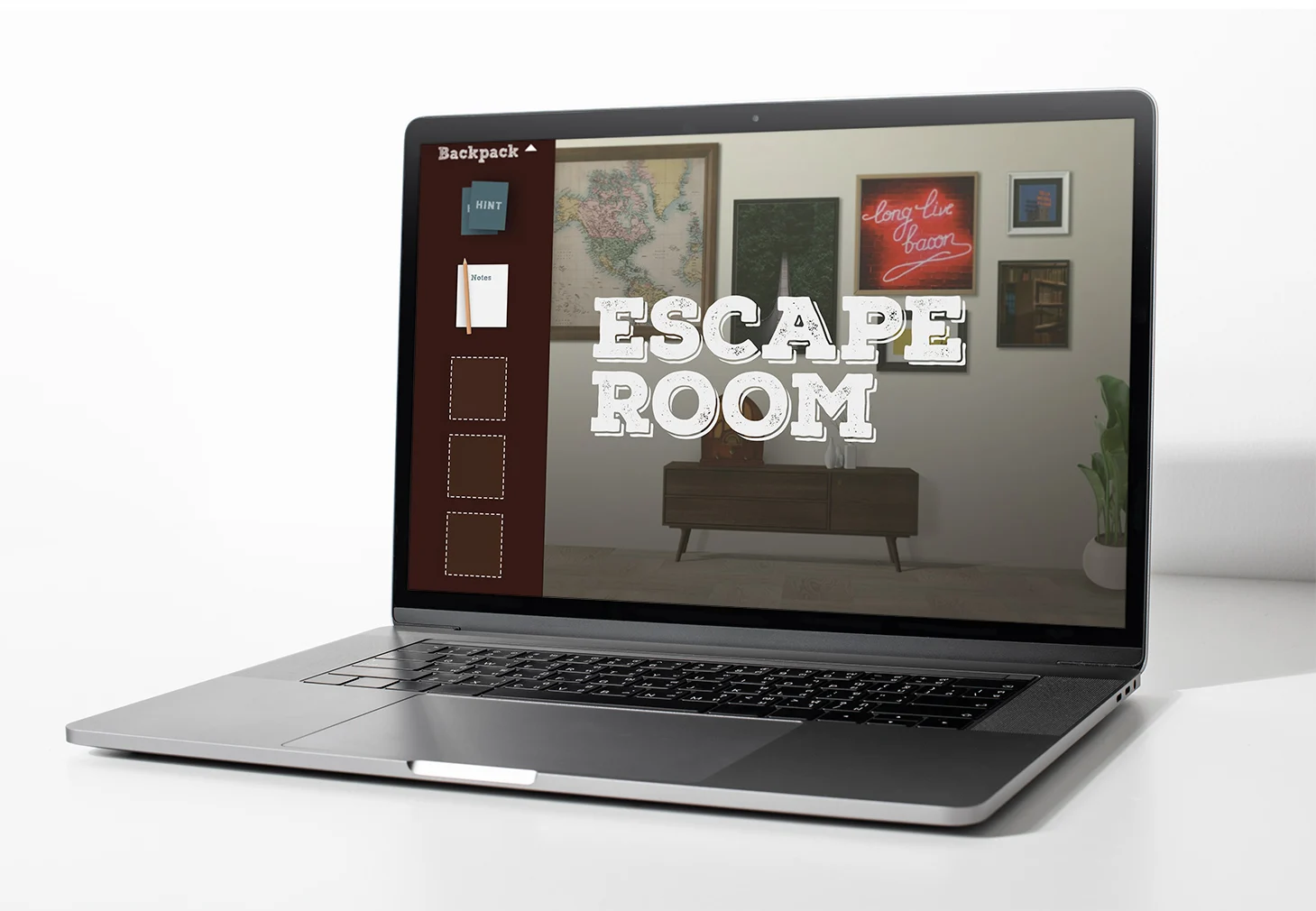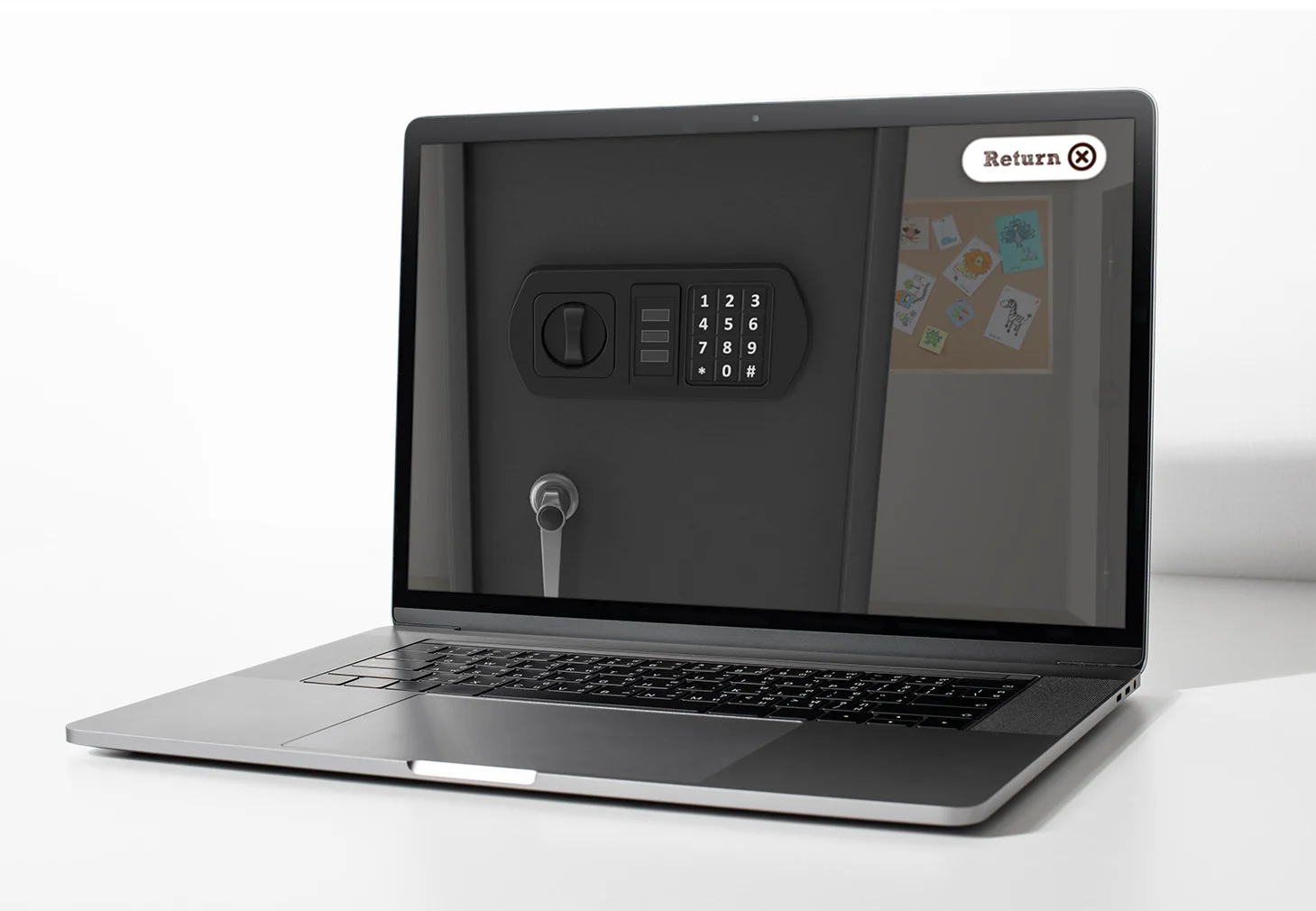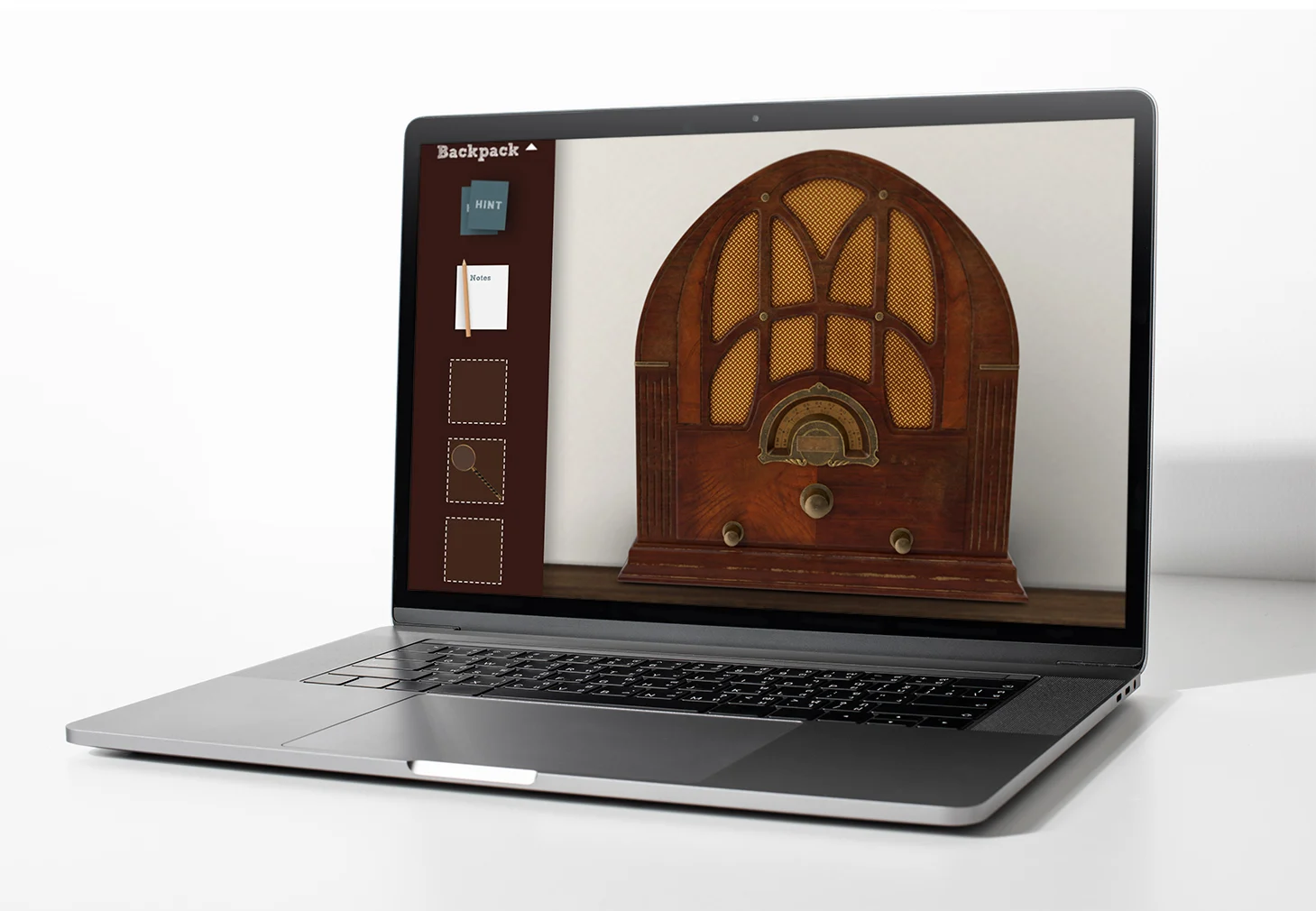
Escape Room – Articulate Storyline
In this self-contained interactive escape room, the learner is tasked with discovering and solving a number of different puzzles. These puzzles range in difficulty and can be tackled in any order. The game is developed to be played in small groups, over zoom, and asynchronously, allowing the learner to take breaks and revisit the room later. Given the challenges and refences within the escape room, using online help is not only allowed but encouraged, and the puzzles are specifically designed to accommodate external assistance.

Instructional Design Structure
This Storyline-built escape room is designed to have escalating challenges that are discoverable by the learner. Puzzles can be completed in any order but are set up to be discovered in order of complexity and obscurity. In preliminary testing, 2 out of 3 learners completed puzzles in ascending difficulty. Objectives range from simple visual puzzles (for example, a few numbers of a combination given upside down, requiring the learner to write them down) to, at the most complex level, an obscure reference given without much context, incorporating the idea that users have access to online tools while playing through the room. To demonstrate how complexity can be modeled in an interactive structure that is player guided, certain puzzles must be completed before others for the learner to properly determine the final sequence of combination numbers. There are also tips, clues, and a “backpack” of items the learner can collect to help them through the escape room.

Use Cases
This Instructional Design approach can be beneficial for a lot of different scenarios in eLearning. These could range from an entire interaction based around a plumber needing to discover, assess, and then determine how to fix an undiscovered issue in a home, to building the structure around teambuilding and coordinating across different individuals at a company. For example, different teams (for our purposes, Team A and Team 1) could receive different escape room games. The teams would be prompted by the knowledge that the clues to solve the escape room for Team A are contained inside the escape room for Team 1, and vice versa. For example, members of Team A may discover a 3-digit code, and then Team 1 would say “Oh! We have a pad lock on a door that needs a 3-digit code, tell me the numbers!” This could also easily integrate real-world scenarios, such as a call center relaying information to an electrician in the field.
Themes
The light sci-fi theme presented here is one example of a possible theme. While the room does not need a theme to be beneficial to learners, it could be heavily themed to increase engagement and realism. Rolling out some training near Halloween? How about an Edgar Allen Poe themed online event where a Raven gives you clues around a room?


As companies continue to structure more content around self-guided learning events, developing solutions for team interaction, varying levels of informational access, and promoting individual discovery is only going to become more common. With instructional design solutions such as this escape room, learners will be more engaged and motivated to complete their training programs.
Committed to
finding solutions
